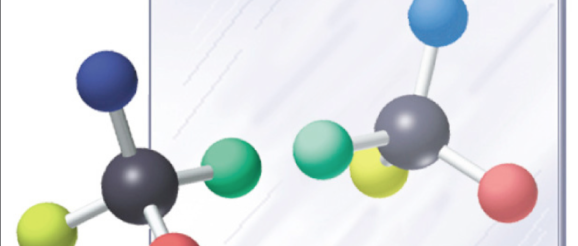Chirality – Innovation

If someone asked you to explain the difference between your left and right hand, what would you say? On the surface, your hands aren’t so different: they are both made of the same components, attached in a similar way. However, if you place one hand on top of the other, your thumbs would be pointing in different directions; that is, they are non-superimposable. In fact, the only real difference between your hands is that one is a mirror image of the other.
The idea of non-superimposable mirror images occupies a special place in the world of organic chemistry, as it describes a concept known as chirality. Molecules are all composed of atoms, and a given set of atoms can bond together in different ways to form a wide variety of compounds, known as isomers. When these isomers contain a carbon bonded to four distinct sets of atoms, one isomer will be the mirror image of another. These “mirror molecules” are known as enantiomers; one member of each pair is designated as R- and the other as S- depending on configuration.
Enantiomers, as chiral molecules, are particularly interesting because they often have distinct properties. A classic example of this is the rotation of plane polarized light: chiral molecules naturally rotate light that is passed through them in a particular direction. In the lab, this property can be quantified to help identify a sample. If one of these chiral molecules rotates light in a certain direction, then its enantiomer will rotate light in the opposite direction. That is, if the R enantiomer rotates light clockwise (dextrorotatory, or +), then the S- enantiomer will rotate light counterclockwise (levorotatory, or -). This property can be used to identify the percentage of each enantiomer in a mixture, which is often necessary after chemical reactions that naturally produce a mixture of enantiomers. Since the enantiomers can have different chemical properties, it helps to know what we’re dealing with when deciding on the next step for a reaction.
Some differences between enantiomers can be distinguished by smell. One example of this is a compound called carvone. R-carvone is responsible for a majority of the scent of spearmint, while S-carvone makes up a portion of the smell of both caraway seeds and dill.
Chirality is critically important in the world of pharmaceuticals. The way in which drugs interact with the body determines not only their effectiveness, but also their potential side effects.
Why does such a minor difference in orientation cause such a large change in how humans react to a chemical? It largely has to do with the interactions between chemicals and their receptors in the body. In much the same way a right hand won’t always fit into a left handed glove, one enantiomer of a molecule can’t fit the same receptor protein as well as the other enantiomer. That is, some reactions and interactions are “stereoselective”: they will occur with one enantiomer more favorably than the other.
Chirality is critically important in the world of pharmaceuticals. The way in which drugs interact with the body determines not only their effectiveness, but also their potential side effects. Take, for example, the well-known illicit drug methamphetamine. In its most common form, this compound occurs as a racemic (50:50) mixture of the enantiomers (+)-methamphetamine and (-)-methamphetamine. (+)-methamphetamine is much more potent than its partner, and causes a majority of the effects associated with this drug. Yet, by isolating the less potent enantiomer, (-)-methamphetamine, we can produce an effective nasal decongestant – the main ingredient in the Vicks Vapor Inhaler and other generic brands. In a way, the difference between methamphetamine and a common decongestant is the same as the difference between your right and left hands.
Historically, differences between enantiomers have had even more dire consequences. The drug Thalidomide, first synthesized in 1953 as a racemic mixture, was often prescribed to pregnant women as a mild sedative and as a treatment for morning sickness. However, in 1961 it was discovered that this drug was responsible for thousands of birth defects, and Thalidomide was pulled from the market. Although R-thalidomide is generally recognized as safe, its counterpart S-Thalidomide has disastrous side effects. Unfortunately, treatment options with R-thalidomide may be limited, as it forms a racemic mixture inside the body by partially converting to S-Thalidomide.
The differences between enantiomers are undeniably important. And yet, the possibilities for variation are endless. Molecules that have more than one chiral carbon can form increasingly complex systems of related compounds, all of which might have different properties. Understanding how these slight differences in structure affect chemical properties may, in fact, mean the difference between life and death.
